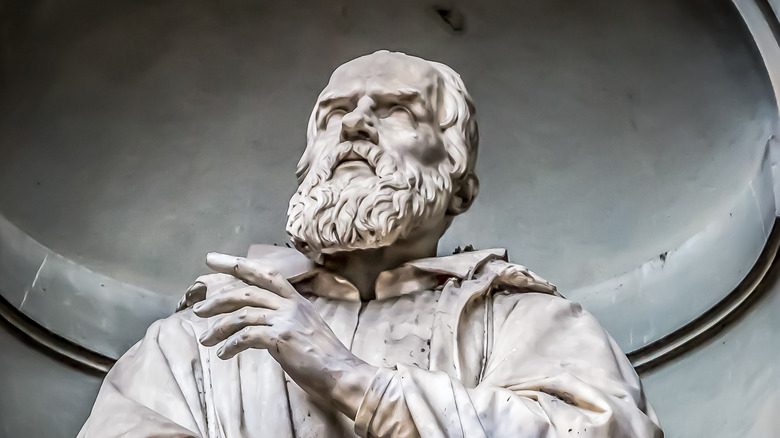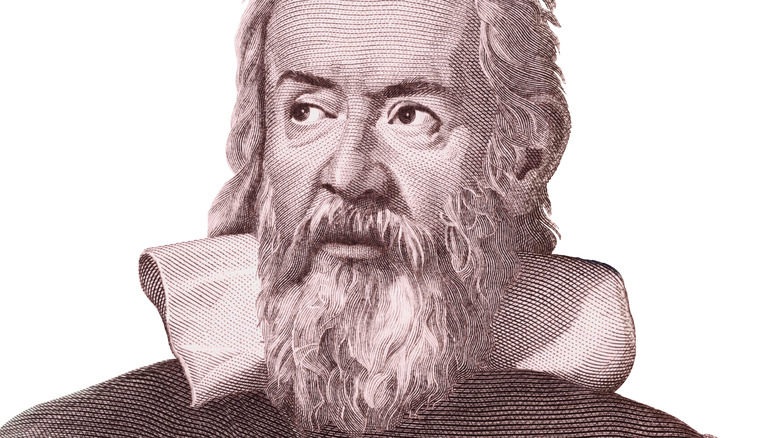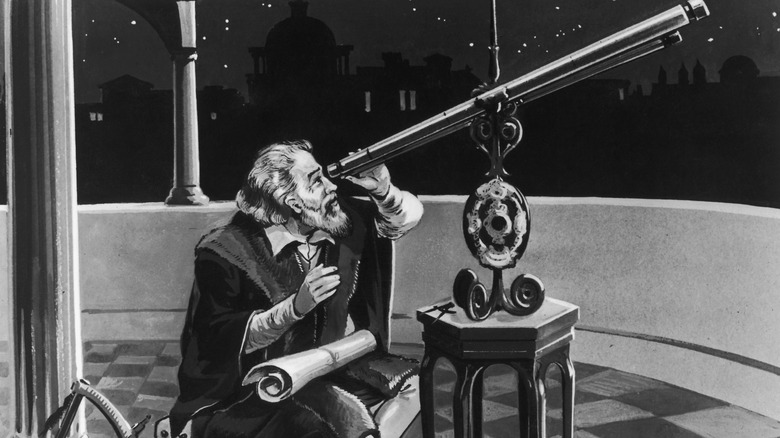The 17th-Century Galileo Manuscript That Basically Went From Treasure To Trash
According to the University of Michigan Library, the institution has been in possession of a manuscript that was believed to have been written by Galileo Galilei himself, making it one of the most important and valuable documents in the Library's collection. Consisting of a single page, the manuscript is an alleged draft of a letter, followed by his notes on the movements of Jupiter's moons between January 7 and 15 in 1610.
The University of Michigan Library states that the document resurfaced in 1934 during the American Art Anderson Galleries' auction of the deceased Roderick Terry's library, which contained a variety of rare documents and books. Its authenticity was established by Cardinal Pietro Maffi when he matched it to a signature from a Galileo letter that he had in his possession. Detroit businessman and collector Tracy McGregor purchased the document, which then was given to the University of Michigan in 1938 by the Trustees of the McGregor Fund upon his death.
The manuscript's true origins
However, after being in possession of the University of Michigan Library for nearly a hundred years, it was revealed to be a forgery. The Library's curator Pablo Alvarez received an email in May 2022 from Nick Wilding, a professor of history at Georgia State University, who claimed that the Galileo manuscript was forged by Tobia Nicotra sometime in the 20th century. When the Library conducted their own investigation into the authenticity of the document, the results aligned with that of Wilding.
According to the University of Michigan Library, there were two main pieces of evidence that established that the manuscript was forged: Its watermark included initials for the paper's production, "BMO" (Bergamo), but watermarked papers from BMO didn't appear until at least 1770, well after Galileo's death in 1642. The other piece of evidence that proved the inauthenticity of the document is that there was no proof that it existed before 1930, and that despite being authenticated by Cardinal Pietro Maffi, the signatures that he compared the document to were also forged by Tobia Nicotra.
A blow to astronomy's history
According to the New York Times, the University of Michigan Library was mortified when this prized document was revealed to be fake, as they believed that the draft of the notes were some of "the first observational data that showed objects orbiting a body other than the Earth." If the document was indeed real, it would have been some of the earliest evidence against the centuries-old belief that the Earth was the center of the galaxy, a view upheld by the Catholic Church well after Galileo's findings.
The revelation of the manuscript's true origins came as a shock to the library's staff, as stated in the New York Times. Donna L. Hayward, the interim dean of the university's libraries, stated "It was pretty gut-wrenching when we first learned our Galileo was not actually a Galileo." Instead of keeping these new details in the shadows, the library thought it best to stick to its goal of spreading knowledge and make the discovery known to the public as, according to Hayward, holding back the truth would run "counter to what we stand for."


